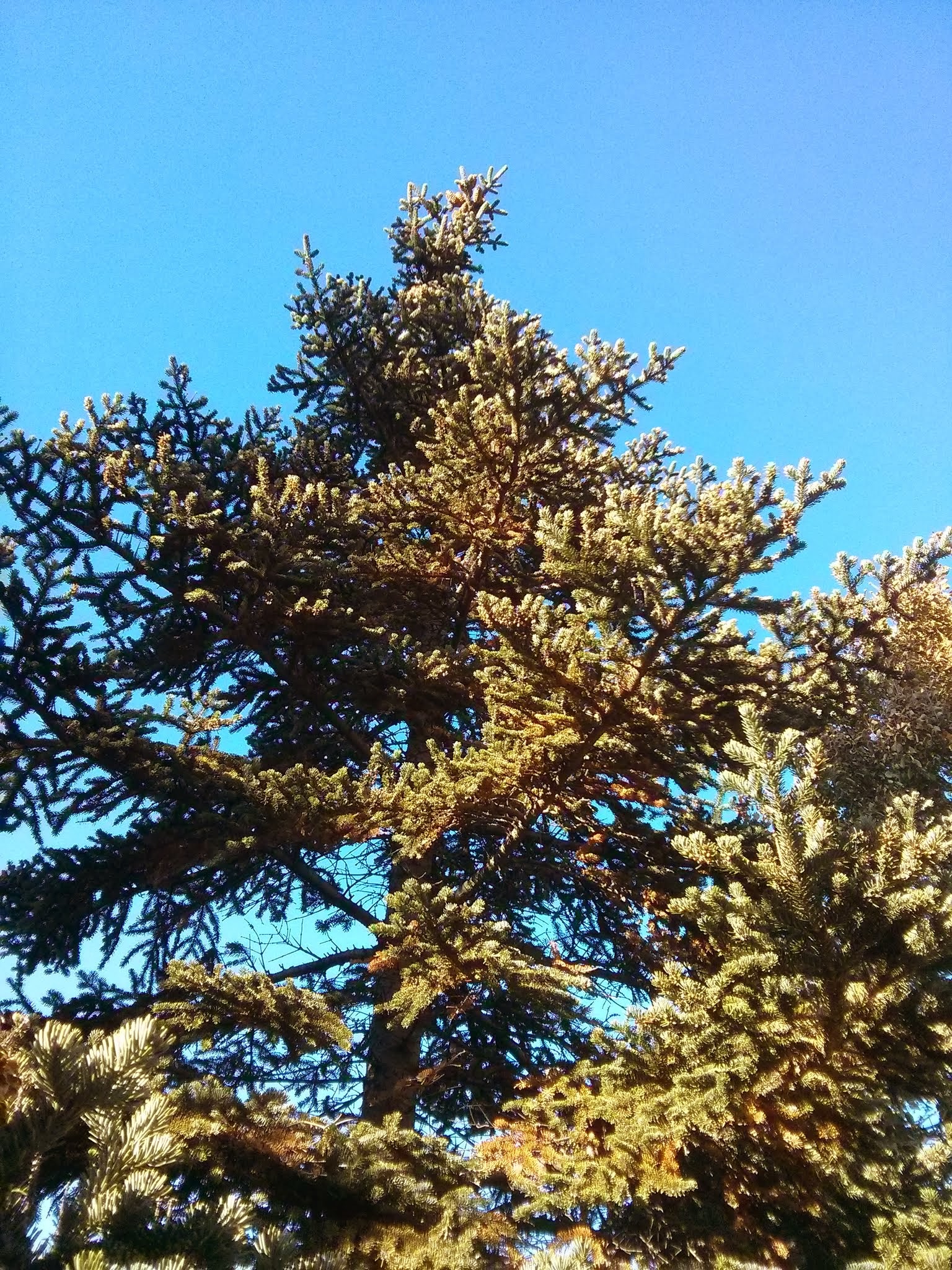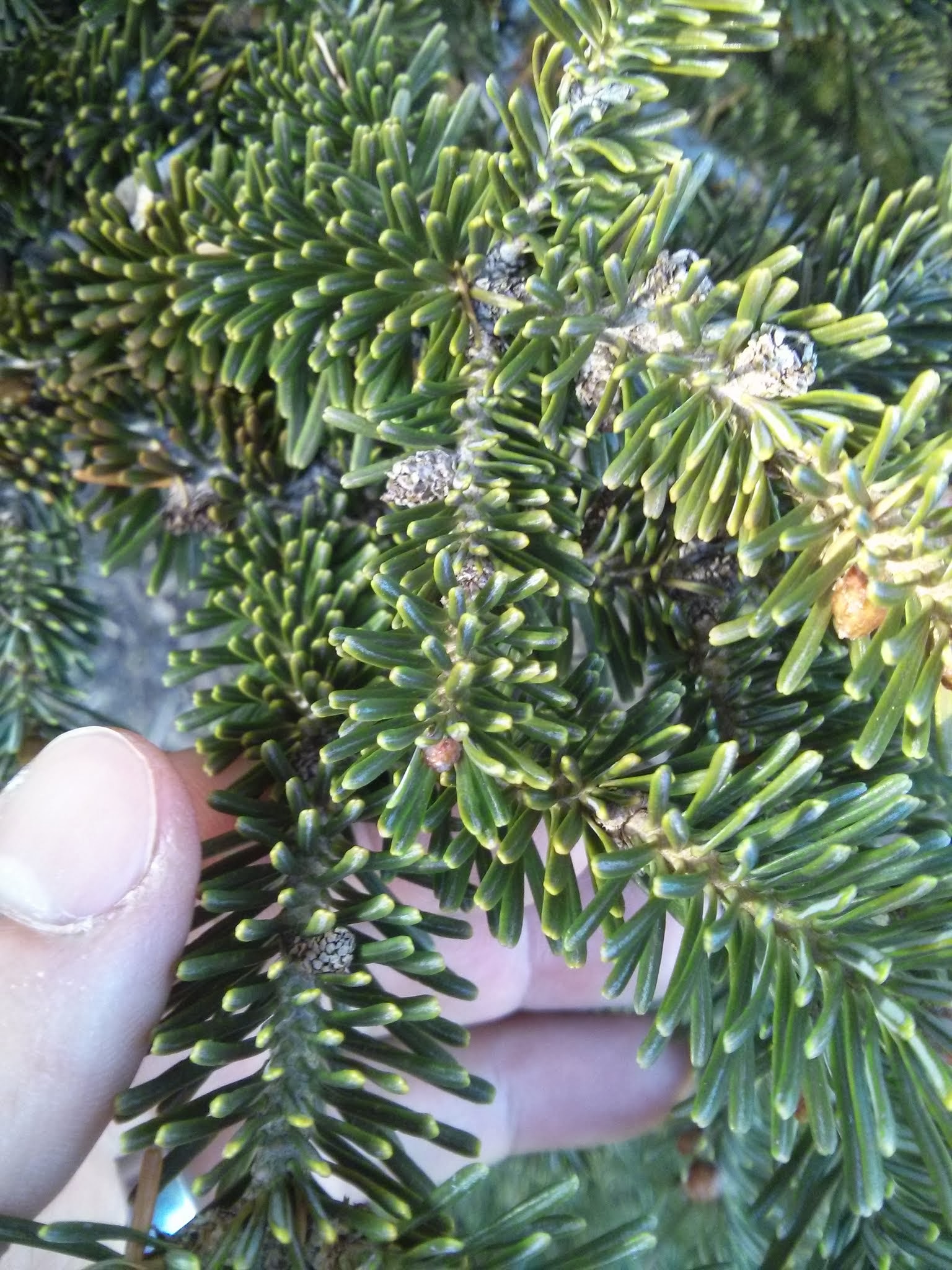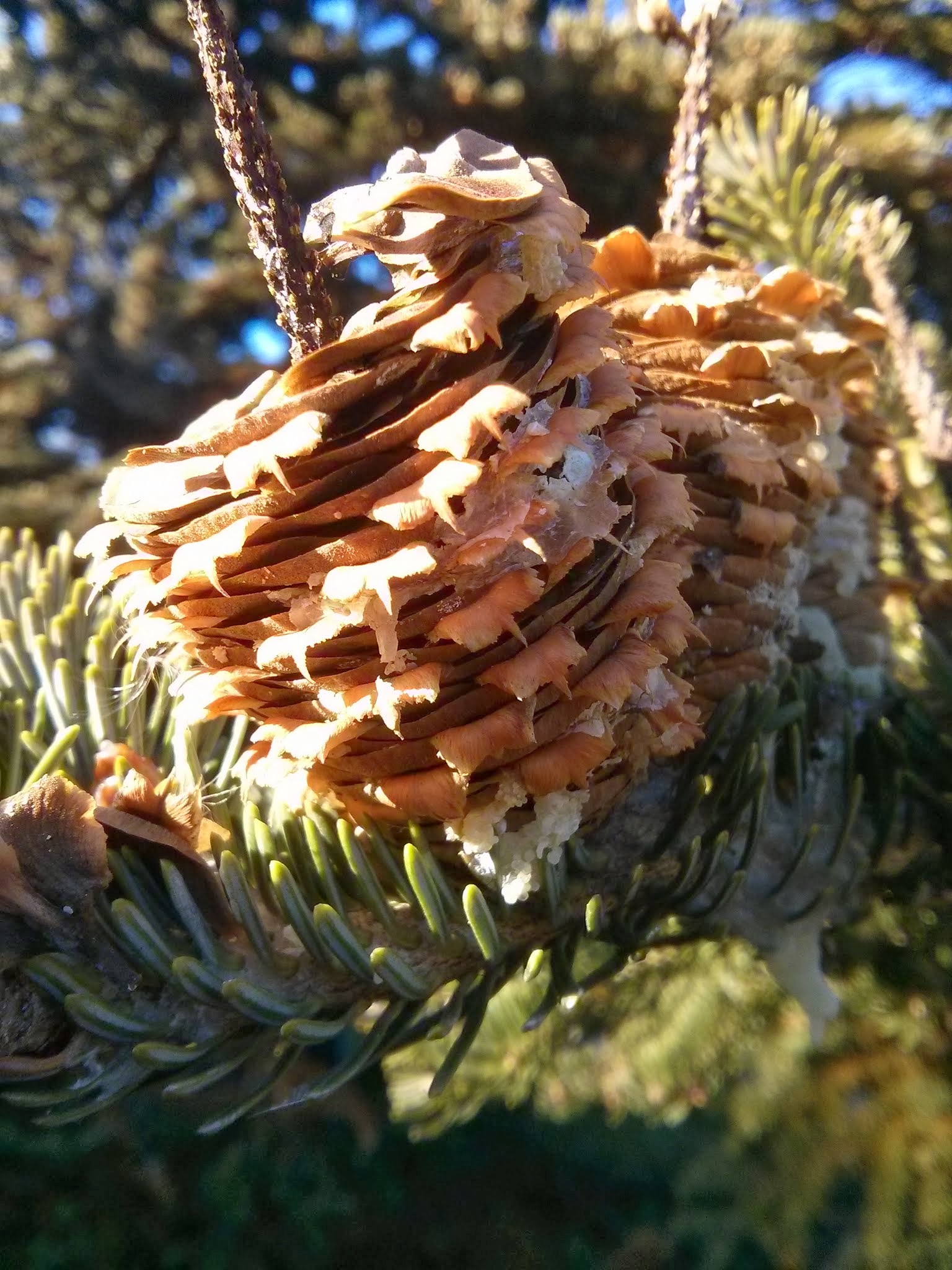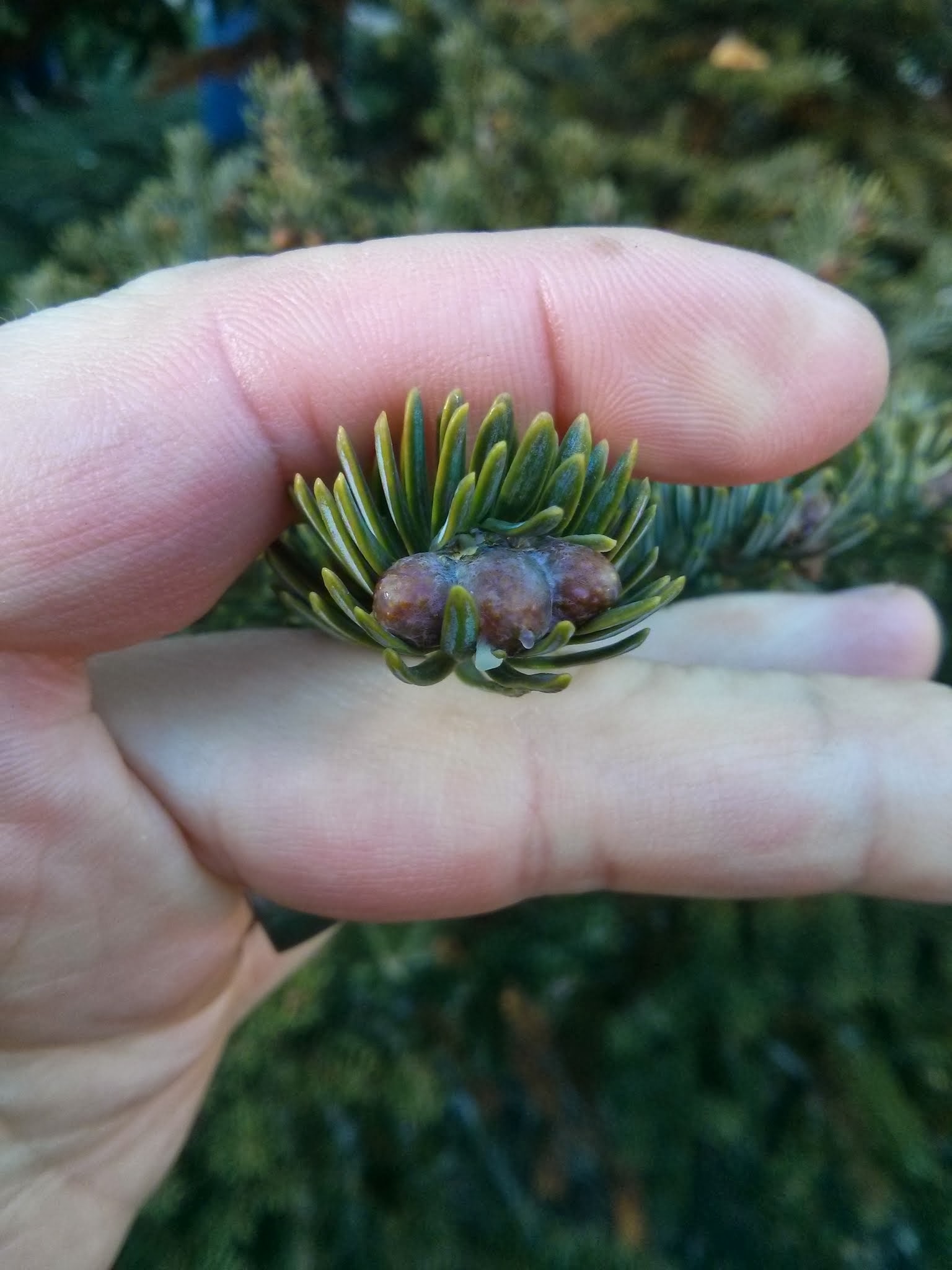Common Name: Fraser fir
Scientific Name:
Family: Pinaceae
Genus: Abies
Species: fraseri
Hardiness Zone: 4 to 7
Height: 30 to 50 ft
Width: 10 to 25 ft
Common characteristics:
The Fraser fir grows to 30' to 50’ tall with a spread of 10' to 25’. It is very similar to balsam fir, the primary difference being in the bracts of the cone scales. Needles are flattened, shiny, and dark green with white-banding beneath. Needles are densely clustered resinous stems. Resin blisters may appear on the bark. Seed cones are purple with conspicuously protruding bracts. As is distinctive with the firs, the cones appear upright on the branches.
Where it grows:
Best grown in rich, moist, slightly acidic, and well-drained soils in full sun to part shade. Trees grow poorly in heavy clay soils. Trees are native to cool, often foggy, mountain climates, and are not recommended for planting in hot and humid summer conditions.
How it’s used:
Fraser fir is one of the most popular species used for Christmas trees because of its fragrant smell. This species may not do well in the urban environment since it does not tolerate drought conditions or salt.
Where it is native to:
The Fraser fir is not native to Minnesota. Its native range is the southeast United States. It is grown locally for use as a Christmas tree.
Problems:
No serious insect or disease problems. Balsam woolly adelgid has been responsible for killing a number of trees in the wild. Additional insect pests include bark beetles, spruce budworms, aphids, bagworms, and scale. Spider mites may occur in hot conditions. Disease problems include root rots, needle rust, and twig blight Trees are generally intolerant of urban pollution. (Missouri Botanical Garden)
References:



